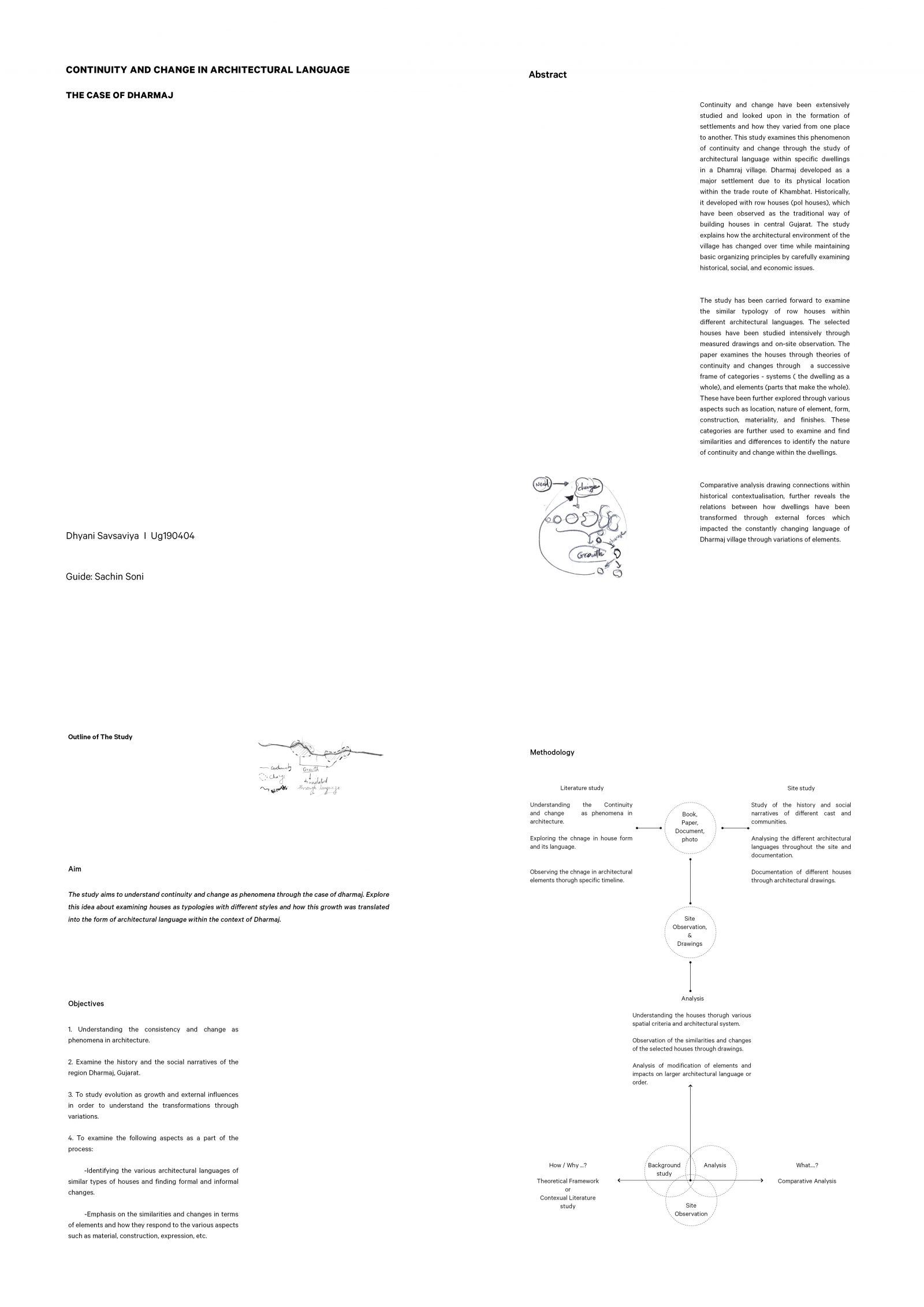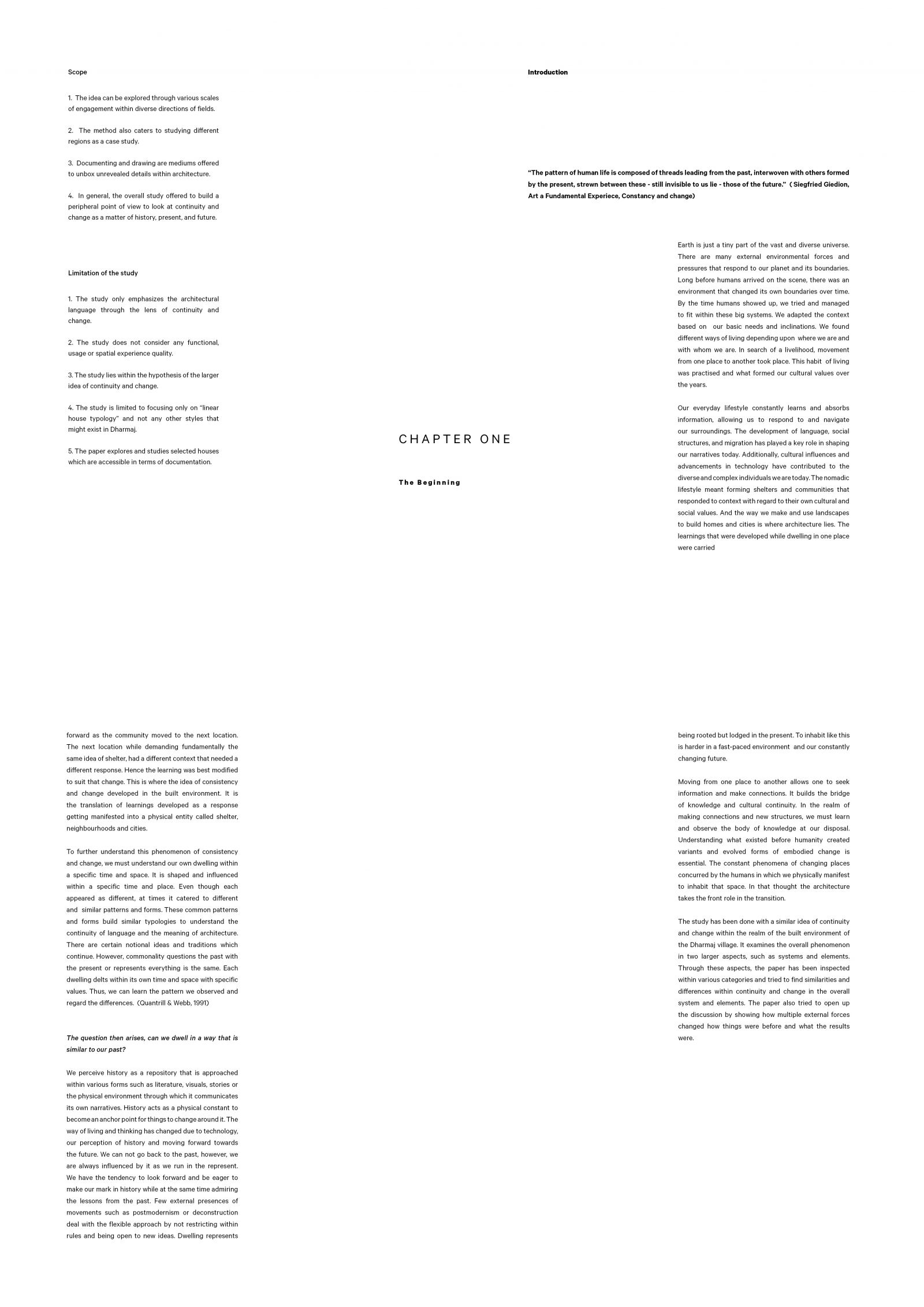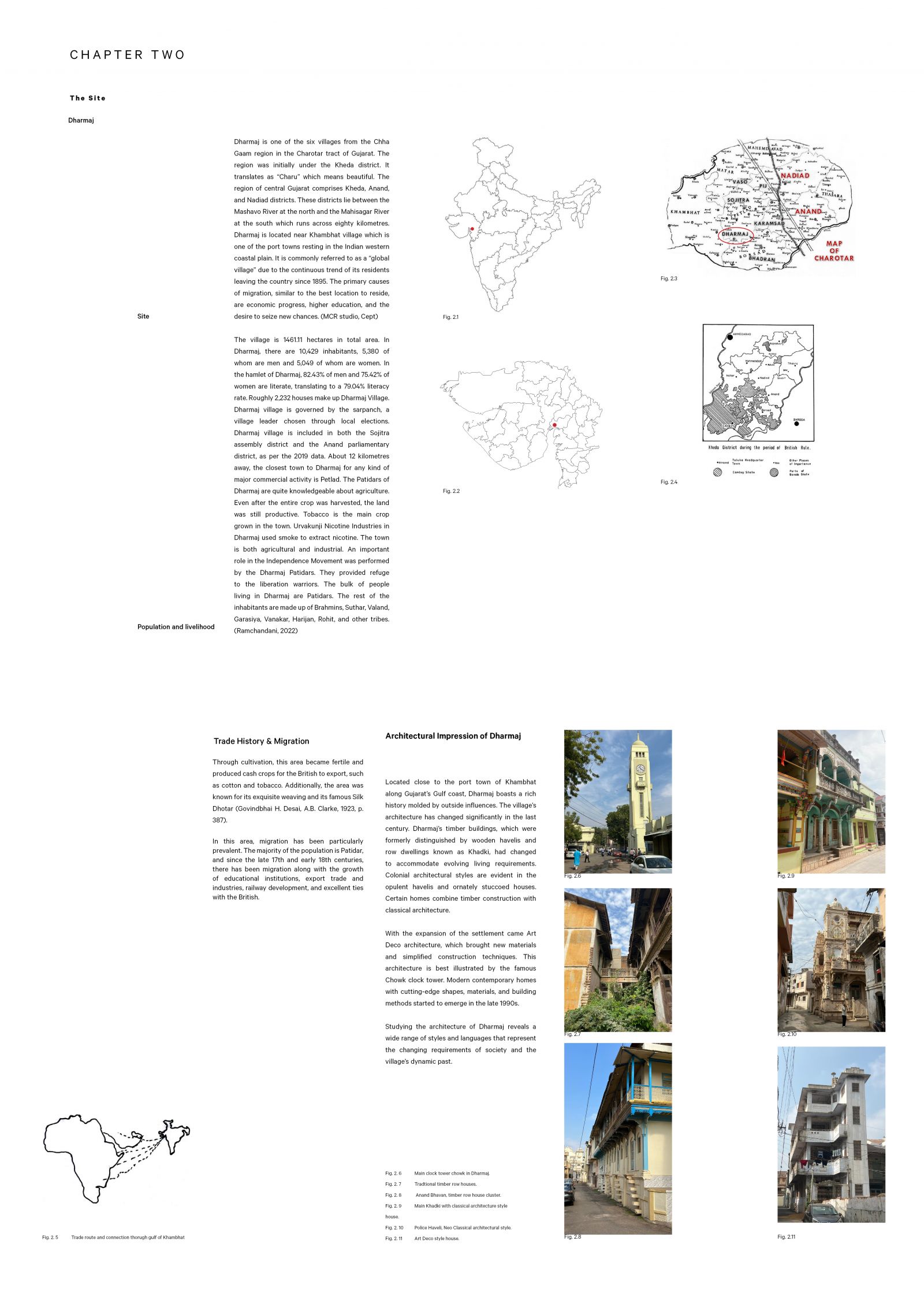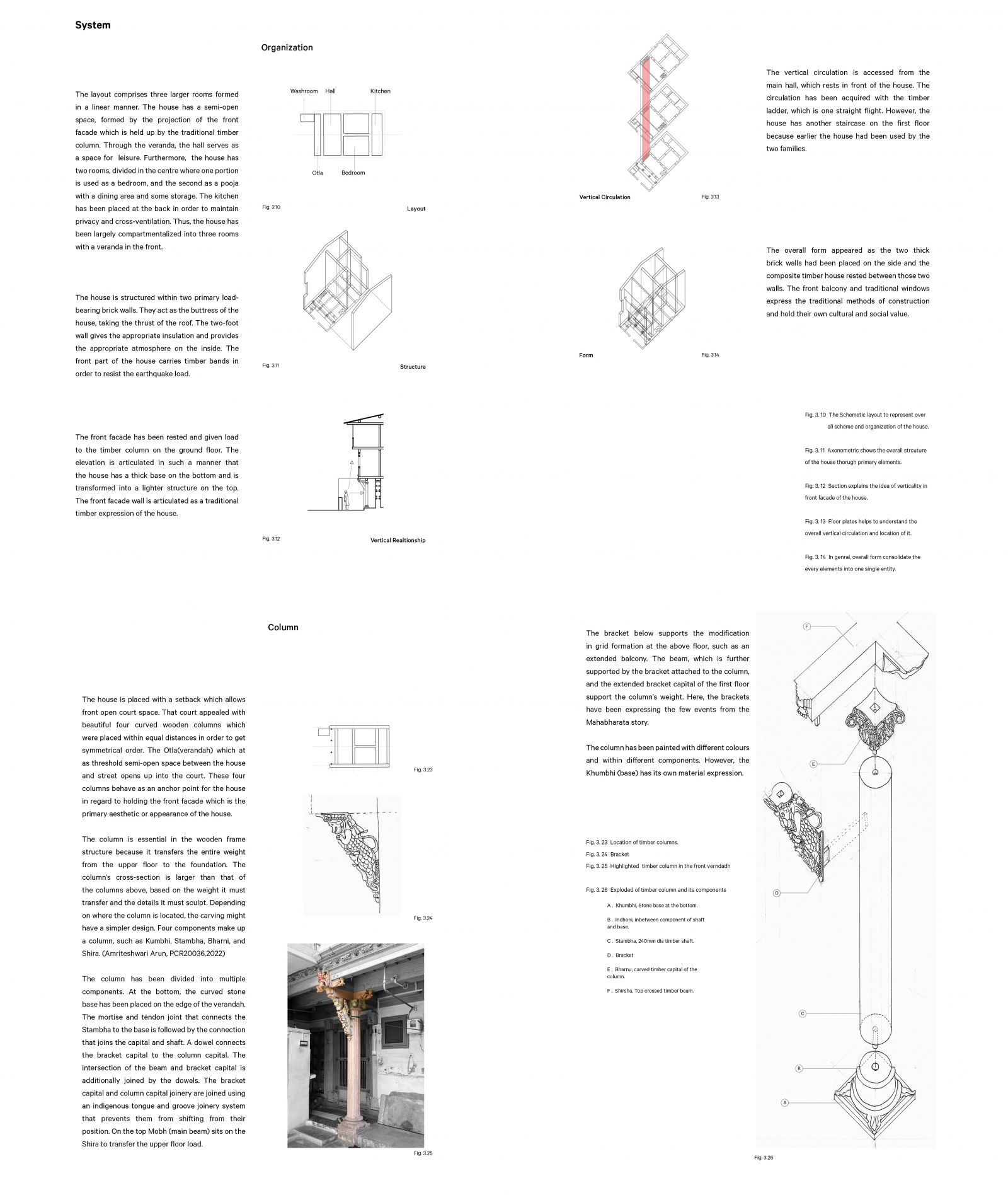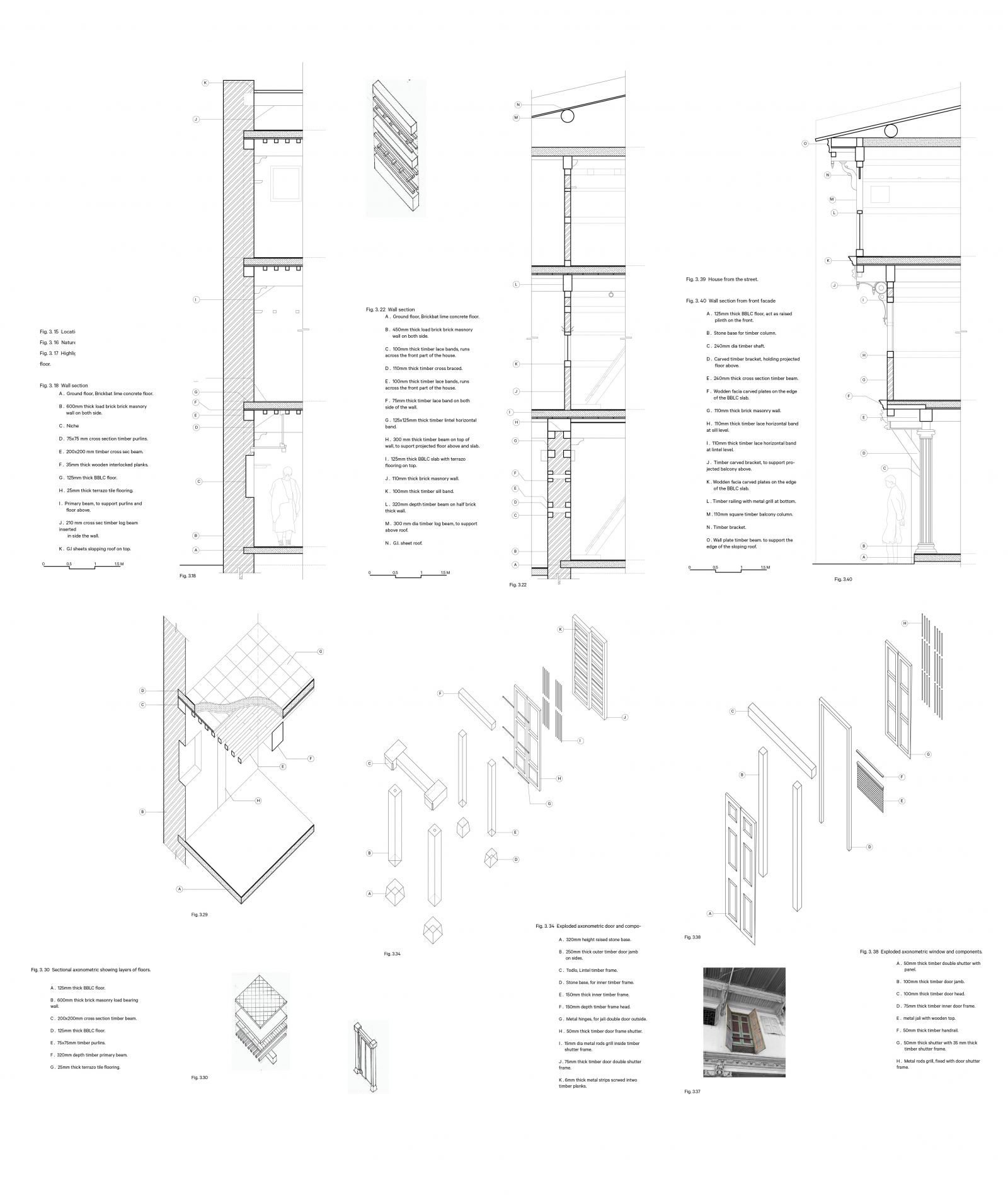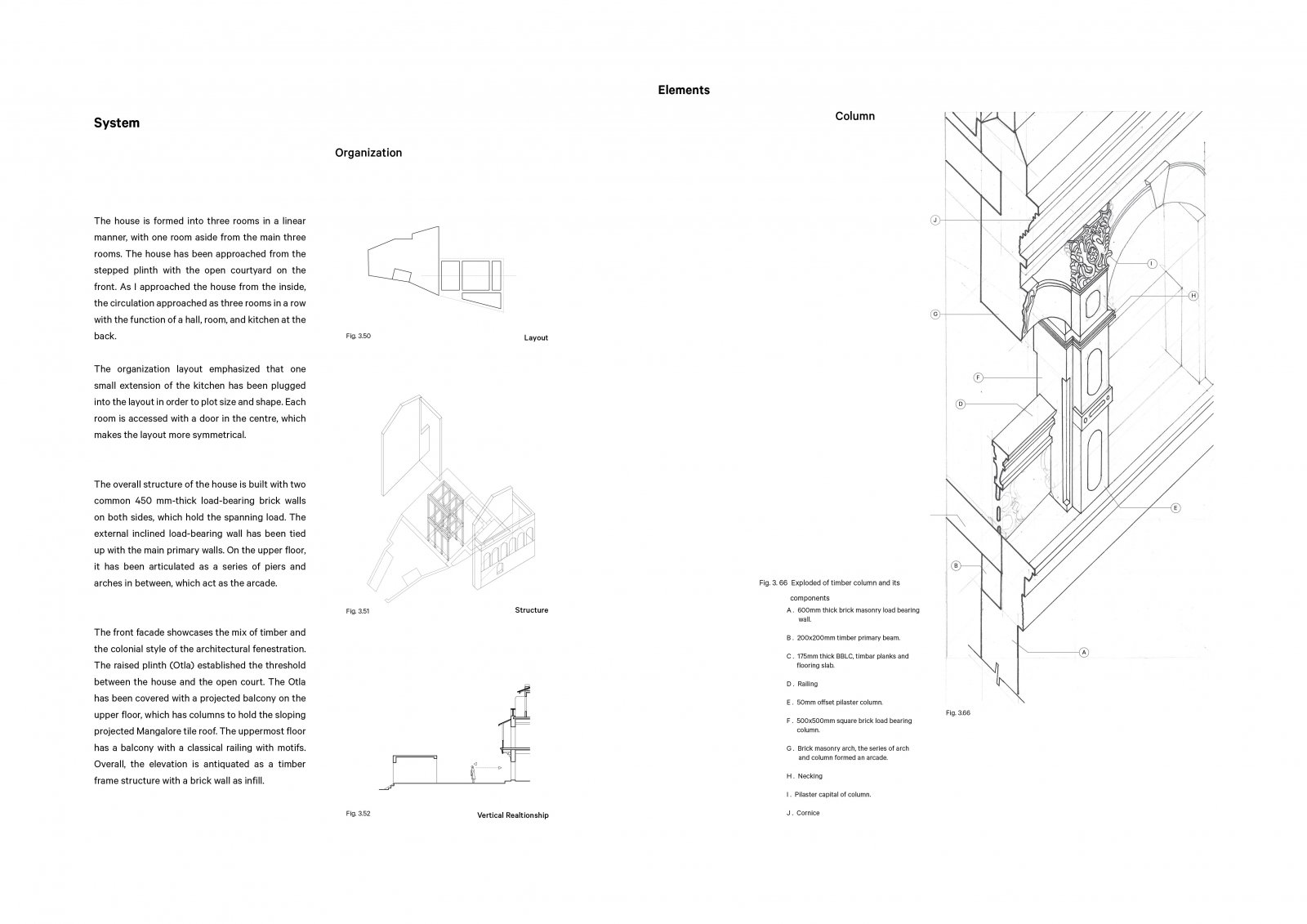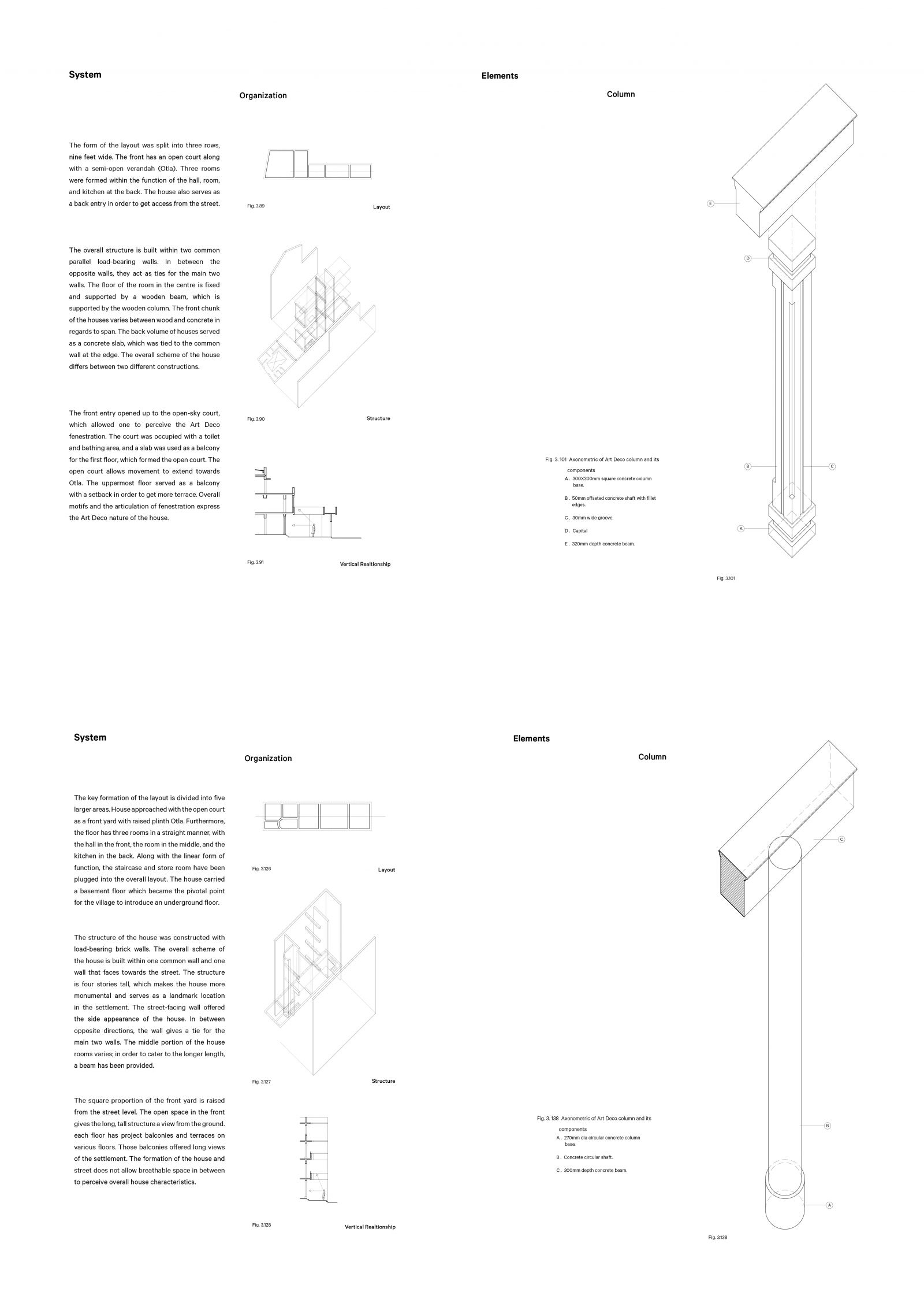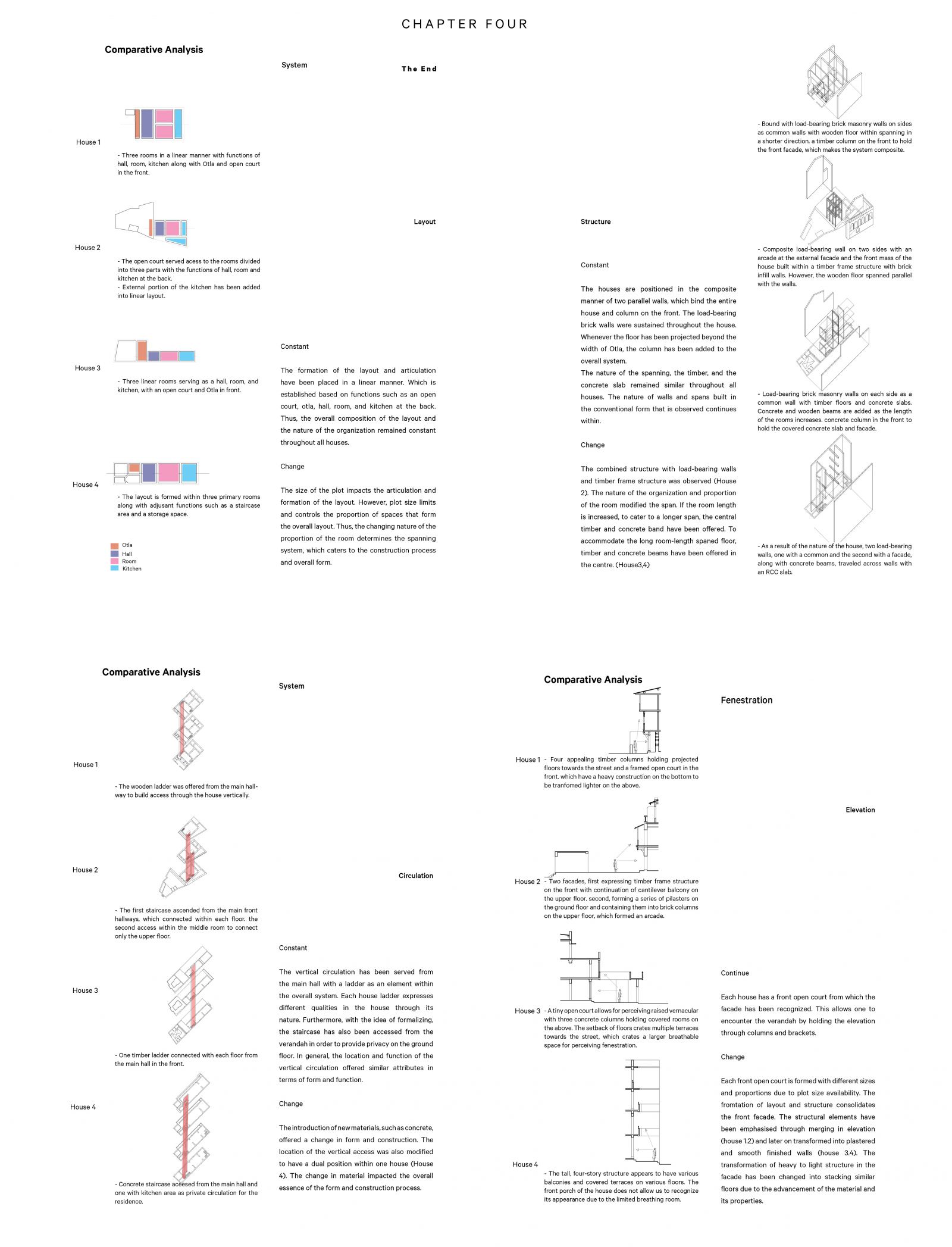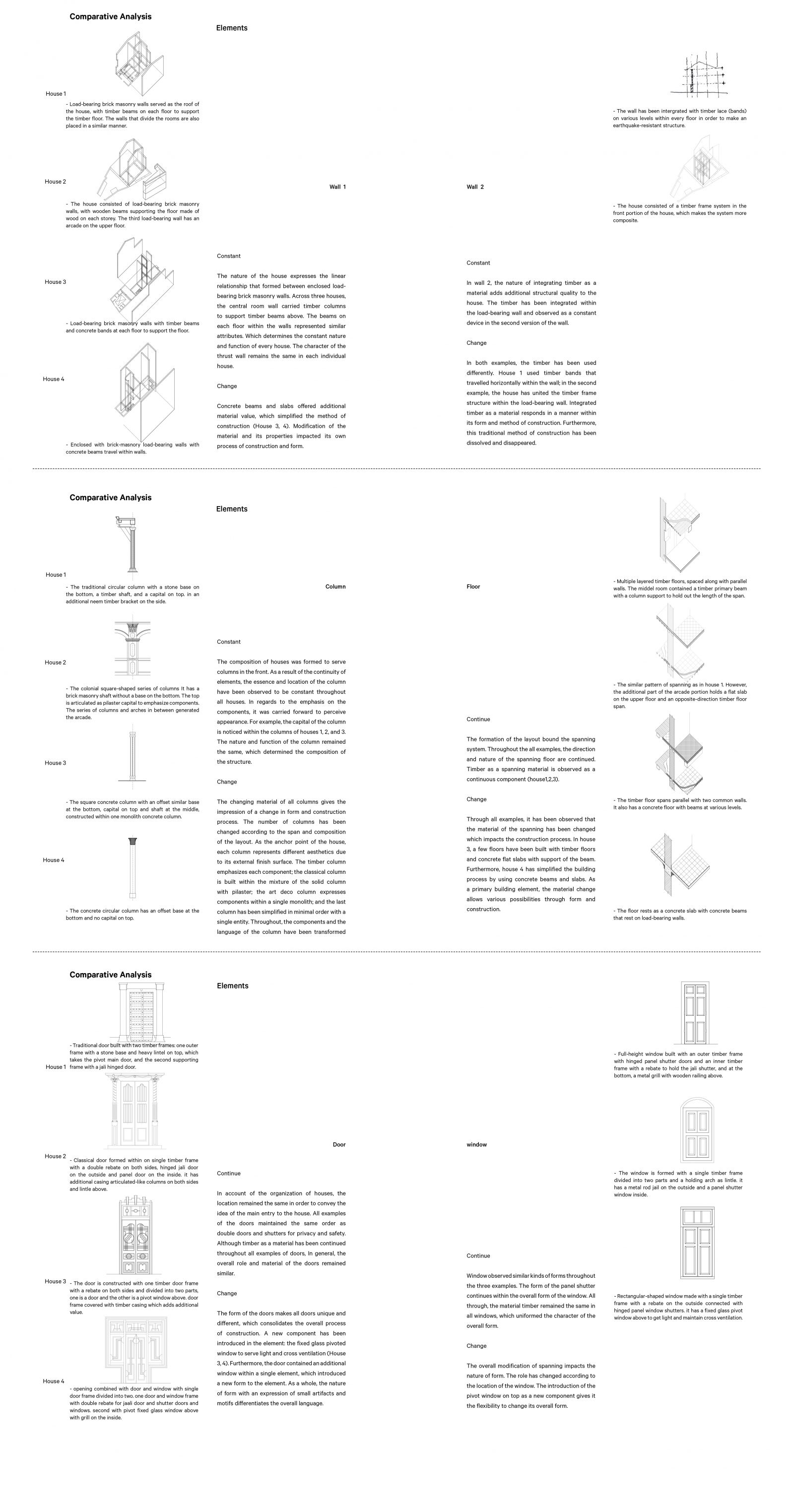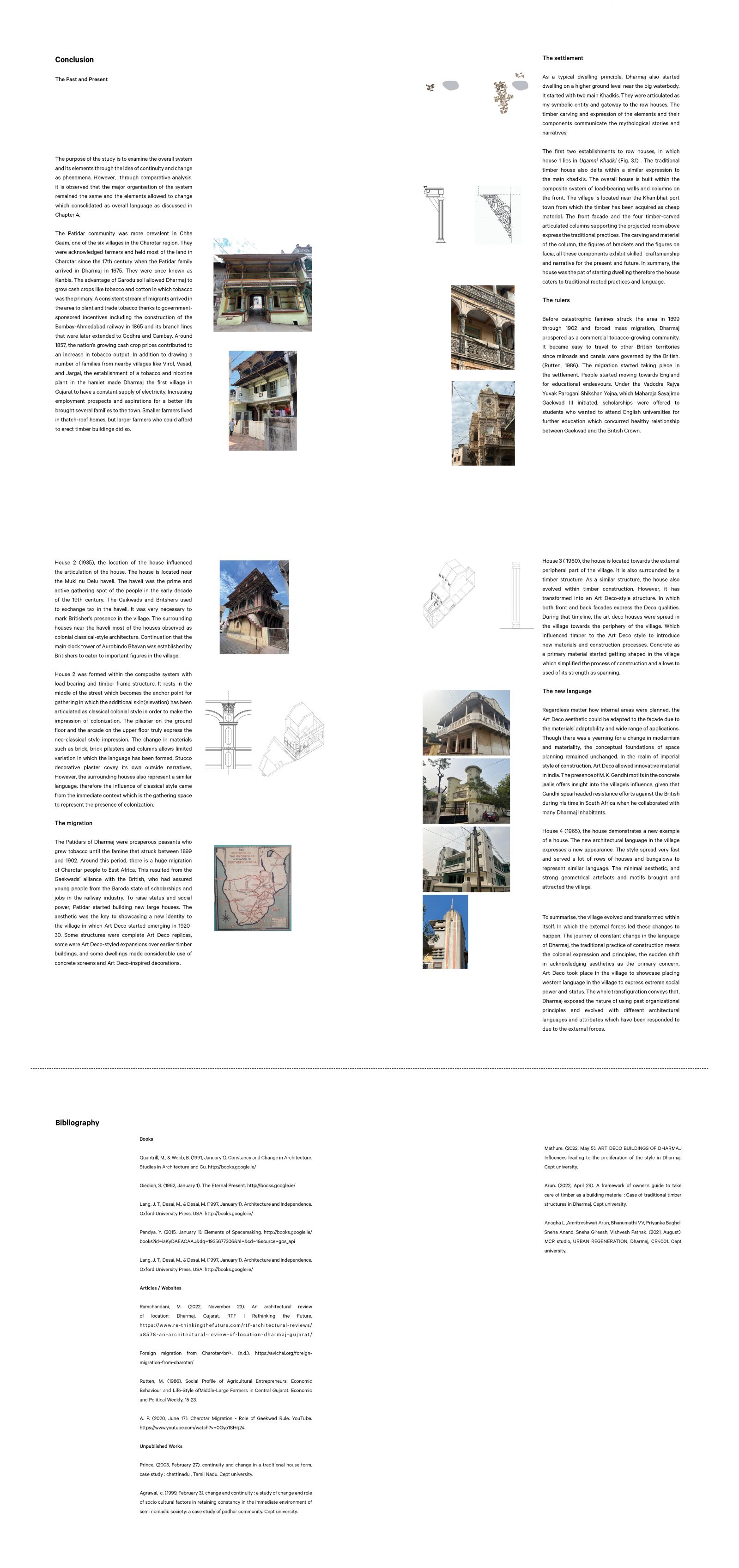Your browser is out-of-date!
For a richer surfing experience on our website, please update your browser. Update my browser now!
For a richer surfing experience on our website, please update your browser. Update my browser now!
The study aims to understand continuity and change as phenomena through the case of dharmaj. Explore this idea about examining houses as typologies with different styles and how this growth was translated into the form of architectural language within the context of Dharmaj.
A prominent settlement in central Gujarat situated along the Khambhat trade route. By analyzing typical row houses, clarifies how the architectural landscape changed while maintaining essential elements. It examines location, construction, and materiality while analyzing homes based on systems and elements using measured drawings and on-site observations. By placing historical influences in context, comparative analysis highlights the influence of outside forces on the development of architecture. The constructed environment of the hamlet is shaped by the ongoing adaptations of Dharmaj's architectural language, which reflect the interaction between tradition and outside forces.
